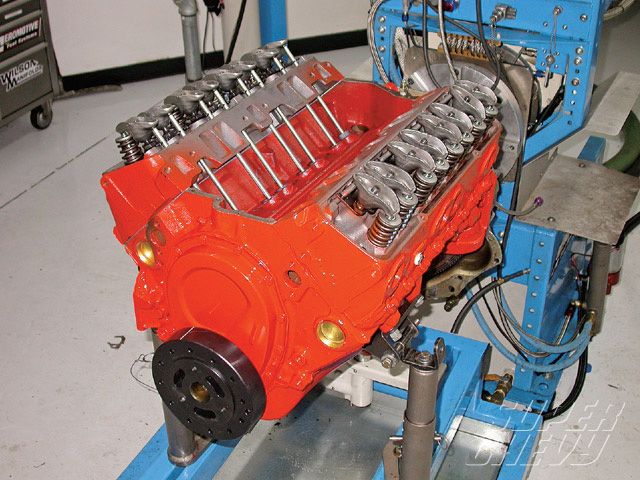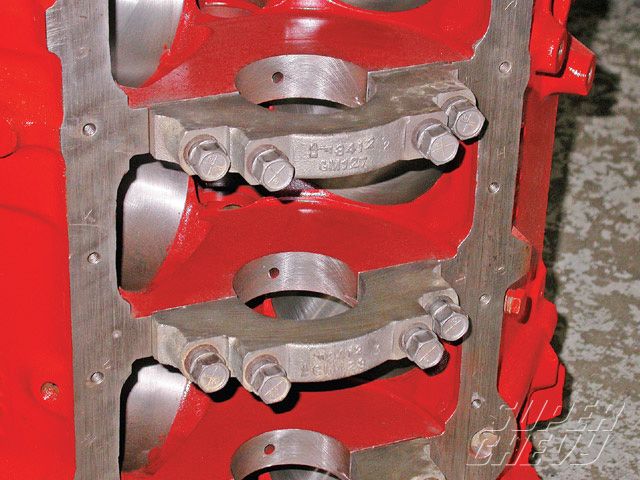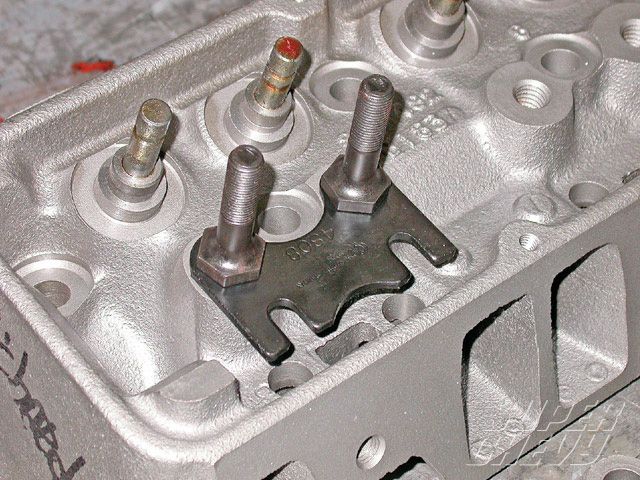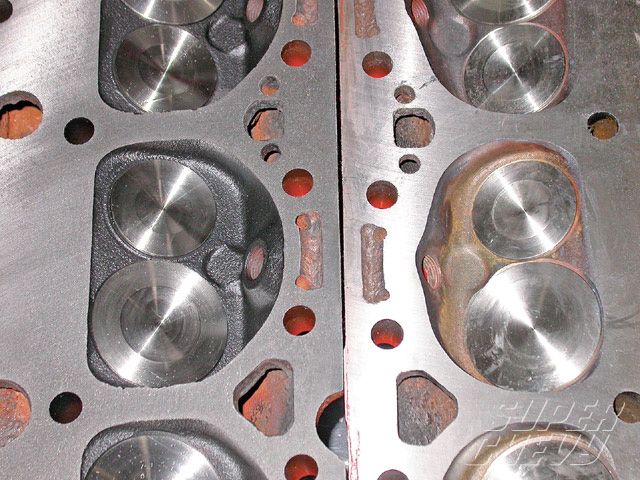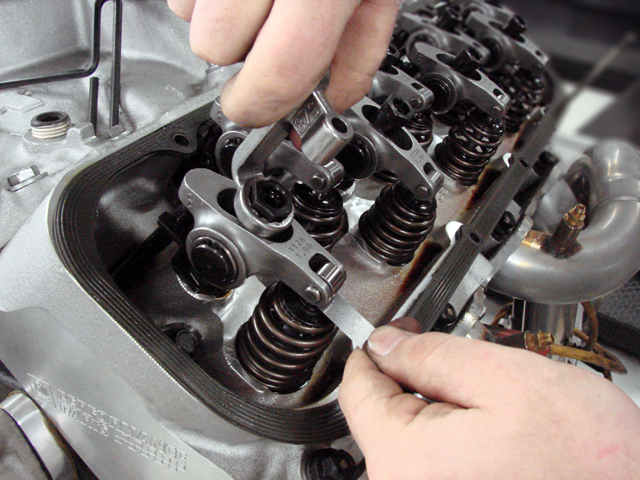327 CI Chevrolet Engine - The Iron Butterfly
A 400hp Twist On L79 327ci Flower Power
From the February, 2009 issue of Chevy High Performance
By Jeff Smith
Photography by Jeff Smith, Tim Moore
Link to Origional Article
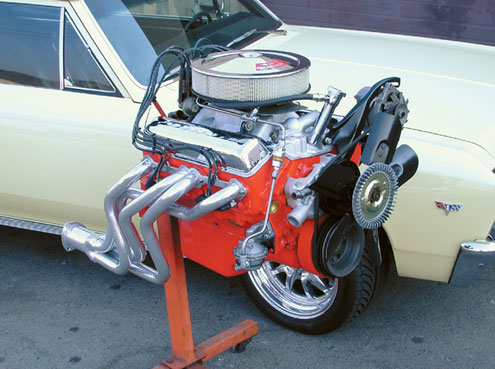
Dust off that lava lamp, dig up those old tie-dyed T-shirts, and resurrect that vinyl copy of In-A-Gadda-Da-Vida, baby, cause we're setting the Way-Back Machine to the year 1967. Back then, big-blocks were exotic beasts that only the affluent enthusiast could afford. For the masses, it was 283, 302, and 327 small-blocks that prowled the streets. The 350 small-block was brand-new that year and had yet to gain a following. Among those street-savvy small-blocks, the 327 enjoyed the most popularity.
Savvy small-block enthusiasts knew all about the 350hp/327ci option for Corvettes, Chevelles, and Novas that had already made a name for itself as a strong and durable performer. In fact, the only small-blocks more powerful were the 365hp carbureted and 375hp fuelie 327s that were available only in a Corvette. For the small-block Chevelle and Nova purists, this 350hp 327 was the magic package.
Fast-forward 35 years to 2002. Chuck Miller owns an original 67 L79 327ci Chevelle that had become long in the tooth. When it came time to rebuild the 327, Miller enlisted the help of his friend Tim Moore. The two hatched a performance plan that would merge the best of 1967 and 2002 all under the guise of a mild-mannered 0.030-over 327.
The plan called for an engine that mimicked an early Mouse but included a few carefully selected internal upgrades that would pump up the horsepower. Moore knew that current cam technology would add a bunch of power, so he bypassed the original cam and instead chose a Comp Cams Xtreme Energy hydraulic roller. The Comp grind offers roughly the same duration at 0.050 inch but delivers a much shorter advertised duration and 0.050 inch more lift (see Cam Specs). That's the beauty of a hydraulic-roller cam.
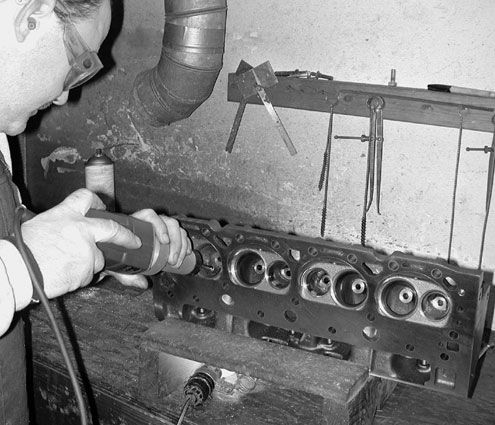
The other half of the equation was the cylinder heads. In order to maintain the look of a stock 327, Moore elected to retain the 64cc, 461 iron double-hump heads. However, he invested in upgrades that included a set of Manley 2.02/1.60-inch stainless steel valves, along with machining for new guides, screw-in ARP studs, Manley guideplates, and larger-diameter Comp springs. Then Moore sent the heads to Slover's Porting, a local cylinder-head porting shop, where Mike Slover performed a simple pocket job designed to maximize flow while removing the least amount of material.
In an effort to save money, Moore chose a set of 0.030-over Keith Black hypereutectic flattop replacement pistons along with a production-style 5/64-inch ring set. After the crank came back from the machine shop, Moore checked all the clearances, had the rods resized and fitted with ARP rod bolts, and bolted the short-block together to come up with 9.1:1 compression. Since this was the numbers-matching block for the Chevelle, Moore trimmed only the driver side to equalize the deck heights and saved the OEM stamp on the passenger side.
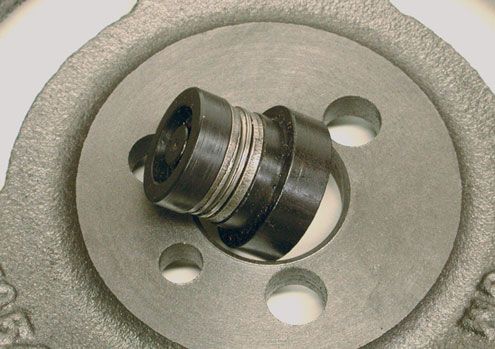
The addition of the hydraulic-roller cam required some specialty assembly tricks, however. Factory hydraulic-roller cam engines use a retainer plate that prevents the cam from moving forward. For early blocks, the best method is to use a roller-cam thrust button. Comp Cams sells a slick height-adjustable roller button to set the proper endplay. The thrust button contacts the inside of the timing chain cover, which is thin and can deflect, so Moore added an Edelbrock aluminum short water pump that includes a thrust-stop bolt that reinforces the timing chain cover. Because all roller cams are made from steel blanks (rather than cast iron), this also requires a special Comp Cams mechanical-fuel-pump pushrod with a bronze tip that prevents damage to the fuel pump eccentric. As with most street roller cams, the Comp Xtreme Energy cam is equipped with an iron distributor drive gear that allows the use of a stock distributor gear.
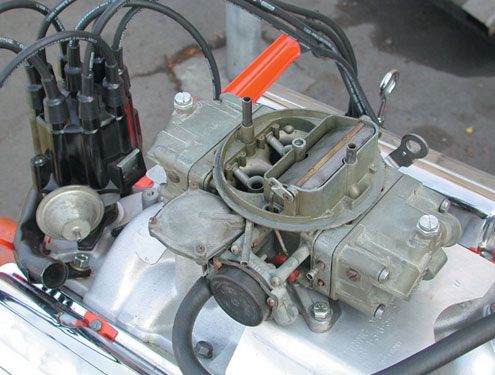
While Moore could have used the stock L79 dual-plane intake, he opted for the Edelbrock Performer RPM intake since it both works well and looks similar to the factory intake. The carburetor is a factory Holley 780 dual-inlet carb that Moore found at a swap meet and rebuilt. For an ignition, Moore used a now-discontinued Stinger distributor to trigger an MSD-6AL ignition amplifier. For an exhaust, Moore and Miller added a set of ceramic-coated 1-5/8-inch headers and a pair of DynoMax 2-1/2-inch welded Ultra-Flo mufflers.
We wanted to see just how much power this little 331ci Mouse motor could make, so we hauled it out to John Baechtel's Westech Super Flow dyno and bolted it to the pump. We held an impromptu pool to see who could guess what its peak horsepower would be. This little motor fooled us all by cranking out an honest 408 hp at 5,700 rpm with peak torque at 400 lb-ft at 4,800 rpm. This computes to a stout 1.23 hp/ci on 91-octane fuel. Factor in the near-stock heads and you have a real winner. The only change we made on the dyno was to add a 1-inch spacer under the carburetor, which Miller won't run for hood-clearance reasons.
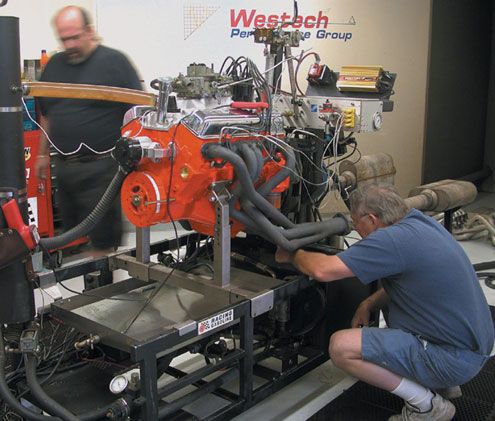
Moore then bolted the 331ci motor into Miller's 67 Chevelle and locked it down with a set of Energy Suspension engine mounts. Miller has elected to run a TH200-4R automatic overdrive behind the 331ci that will literally bolt right in using the stock rear crossmember. Combined with a set of 3.42 gears in the 12-bolt, the finished product should run very strong and cruise comfortably in Overdrive. We computer-simulated the car at the dragstrip at 3,600 pounds, and it should run respectable 13-teens at around 104 mph.
The engine is not a budget special, but it easily made 30 to 50 more horsepower than we thought it would. Think of this as a 21st-century 327ci version of flower power. Right on, man!
